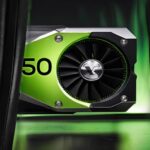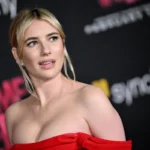
Artificial intelligence really close to replacing artists?
The Rise of Artificial Intelligence in Art
Artificial intelligence (AI) has made significant strides in recent years, permeating various sectors, including art. From generating images and music to crafting entire storylines, AI is no longer just a tool for automation; it has become a creative force in its own right. But is AI really close to replacing artists? The answer is complex and involves understanding both the capabilities of AI and the essence of human creativity.
AI in art primarily operates through algorithms that analyze patterns and replicate them. For instance, AI programs can create stunning visual art by studying thousands of images, learning styles, and then generating new pieces that mimic these styles. Some AI-generated art has even been auctioned at major art houses, fetching impressive prices and raising questions about the future of human creativity.
The advantages of AI in art are clear. AI can produce large volumes of work at a speed that no human artist could match. It can also experiment with styles and techniques quickly, offering endless variations on a theme. Moreover, AI is highly accessible, allowing even those without formal training to create art with a few clicks.
However, the rise of AI in art has sparked debates. Critics argue that while AI can replicate and generate art, it lacks the emotional depth and subjective experience that human artists bring to their work. Art is not just about the final product; it’s about the process, the intention, and the personal expression behind it. Can an algorithm, no matter how advanced, truly replicate the unique perspective and emotion of a human artist?
The Future of Artists in an AI-Driven World
As AI continues to develop, the role of artists is likely to evolve rather than disappear. Instead of replacing artists, AI could become a powerful tool for enhancing human creativity. Artists can use AI to explore new techniques, streamline their processes, and push the boundaries of traditional art forms.
For instance, AI can handle the more technical aspects of art creation, such as generating base designs or offering color suggestions, allowing artists to focus on the conceptual and emotional aspects of their work. AI can also help artists reach a broader audience by creating personalized content tailored to individual tastes, leading to more engaging and diverse art experiences.
Moreover, the human element in art remains irreplaceable. Art is deeply connected to culture, history, and personal experience, all of which are uniquely human. While AI can generate images, music, or stories, it lacks the ability to draw from personal memory, social context, or cultural significance in the way a human artist can.
While AI is making significant inroads into the art world, it is not close to replacing artists. Instead, it is opening up new possibilities for creativity and collaboration. Artists who embrace AI as a tool rather than a threat will likely find themselves at the forefront of a new era of art, where human creativity and artificial intelligence work hand in hand to produce something truly extraordinary.




